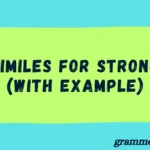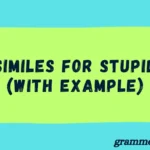Ever picked up a novel and noticed a symbol popping up again and again, stirring something deep inside you? Or maybe a big idea lingered long after you closed the book? That’s the magic of motifs vs themes working together to make stories unforgettable.
These literary tools shape narratives, spark emotions, and invite readers to think. Yet, many confuse the two, mixing up their roles like a plot twist gone wrong.
Don’t worry—this guide will clear up the confusion with vivid examples, practical tips, and a friendly dive into what makes motifs and themes tick. Let’s explore how these elements breathe life into literature and why they matter to readers and writers alike.
Why Motifs and Themes Matter
Imagine reading The Great Gatsby without noticing the green light glowing across the water or grasping the idea of unreachable dreams. Motifs and themes are the threads that weave a story’s fabric, making it richer and more meaningful. Motifs are the recurring images or ideas that catch your eye, while themes are the deeper messages that hit your heart.
Understanding them transforms how you read and write, turning a good story into a profound experience. For readers, spotting these elements unlocks hidden layers. For writers, they’re tools to craft stories that resonate. Ready to dive in? Let’s start with motifs, the pulse of any great tale.
Defining Motifs: The Pulse of a Story
A motif is like the catchy chorus of your favorite song—it keeps showing up, sticking in your mind, and tying the story together. In literature, motifs are recurring elements—symbols, images, sounds, or even phrases—that reinforce a story’s deeper meaning. They’re not random; they’re deliberate, chosen by authors to create cohesion and spark emotions. Think of the mockingbird in To Kill a Mockingbird. It pops up repeatedly, symbolizing innocence and vulnerability, tying scenes together like a melody.
Motifs aren’t just decoration. They amplify mood, highlight key ideas, and guide readers toward the story’s core. For example, in The Great Gatsby, the green light at Daisy’s dock appears again and again, representing Gatsby’s longing for a dream just out of reach. It’s a small detail with big impact, nudging readers to feel his yearning. By repeating, motifs create a rhythm that makes stories feel alive and connected.
Exploring Types of Motifs
Motifs come in different flavors, each adding a unique spark to a story. Here’s a breakdown of the main types, with examples to make them crystal clear:
- Symbolic Motifs: These are objects or images that carry deeper meaning. In The Scarlet Letter, the red letter “A” is a motif symbolizing shame, identity, and redemption. It shows up on Hester’s chest, in the sky, and even in her daughter’s name, weaving the story’s emotional thread.
- Structural Motifs: These involve repeated narrative patterns. In The Odyssey, the motif of the journey—Odysseus facing trials to return home—shapes the epic’s structure, reinforcing resilience and homecoming.
- Conceptual Motifs: These focus on abstract ideas or emotions. In Wuthering Heights, the motif of storms reflects passion and chaos, mirroring Heathcliff and Cathy’s turbulent love.
Each type serves a purpose, like brushstrokes in a painting, adding depth and unity. Spotting these in your reading can feel like uncovering a secret code, making every page more exciting.
Unpacking Themes: The Soul of a Story
If motifs are a story’s pulse, themes are its soul. A theme is the central message or insight a story conveys, often universal and thought-provoking. Unlike motifs, which you can see or hear in the text, themes are abstract, inviting you to ponder big questions about life. Think of the theme as the “why” behind a story—what it’s really trying to say. In Macbeth, the theme of unchecked ambition drives the tragedy, showing how greed can destroy lives.
Themes resonate because they tap into human experiences. They’re not preachy lessons but ideas that linger, like the taste of a good meal. For instance, in The Fault in Our Stars, the theme of mortality pushes readers to reflect on life’s fragility and beauty. Themes don’t just tell a story—they ask you to feel and think, connecting you to characters across time and place.
Diving into Types of Themes
Themes come in many shapes, each offering a lens on the human condition. Here’s a look at the main types, with examples to bring them to life:
- Moral Themes: These explore right and wrong. In To Kill a Mockingbird, the theme of justice shines through Atticus Finch’s fight against prejudice, urging readers to consider fairness in society.
- Existential Themes: These tackle life’s big questions. In The Stranger by Albert Camus, the theme of absurdity questions meaning in a chaotic world, leaving readers wrestling with purpose.
- Social Themes: These comment on society. In Pride and Prejudice, the theme of class struggle drives Elizabeth and Darcy’s romance, exposing rigid social hierarchies.
Each theme type offers a unique perspective, making stories mirrors for our own lives. As you read, ask yourself, “What’s this story teaching me about the world?” The answer often lies in its themes.
Motif vs. Theme: A Clear Comparison
Now that we’ve got motifs and themes down, let’s see how they differ. Picture motifs as the colorful threads in a tapestry, weaving patterns that highlight the bigger picture—the theme. Here’s a table to break it down:
| Aspect | Motif | Theme |
| Definition | Recurring element reinforcing meaning | Central message or insight |
| Scope | Specific, often tangible | Universal, abstract |
| Role | Supports and highlights the theme | Provides the story’s core idea |
| Example | The raven in The Raven (loss) | Grief as a universal experience |
Motifs are like clues, popping up to point you toward the theme. In The Lord of the Rings, the One Ring is a motif symbolizing power’s allure, reinforcing the theme of corruption. Motifs are concrete—you can spot them in the text—while themes are abstract, emerging as you connect the dots. Together, they create a story’s magic, one building the other.
Key Differentiators: Motifs and Themes in Action
To really get the difference, let’s dig into how motifs and themes work in practice. Here are the key distinctions:
- Frequency: Motifs repeat often, like a drumbeat. In The Catcher in the Rye, Holden’s red hunting hat appears repeatedly, signaling his individuality. Themes, like alienation in the novel, build slowly, revealed through the story’s arc.
- Tangibility: Motifs are specific and tangible—a storm, a color, a sound. Themes are broader ideas, like chaos or love. In Moby-Dick, the white whale is a motif; the theme of obsession is what it points to.
- Function: Motifs set the mood or add symbolism. Themes provoke thought, asking you to reflect. The motif of clocks in The Great Gatsby creates a sense of time slipping away, supporting the theme of lost opportunities.
Think of motifs as the ingredients and themes as the finished dish. One’s the raw material; the other’s the meaning it creates.
Case Study: The Great Gatsby
Let’s zoom in on The Great Gatsby. The motif of the green light appears in key scenes—Gatsby staring at it across the bay, reaching for it in hope. It’s a concrete image, symbolizing his unattainable dream of Daisy. The theme, however, is the elusiveness of the American Dream, a broader idea that emerges through Gatsby’s struggle, the motif, and other story elements. This interplay shows how motifs and themes dance together, each enhancing the other.
Tracing the Origins of Motifs and Themes
Where do motifs and themes come from? Their roots run deep, tied to the history of storytelling itself.
Origins of Motifs
Motifs trace back to ancient storytelling, from myths to epics. Early storytellers used recurring symbols to make tales memorable, like the trickster archetype in Native American folklore or the light vs. darkness motif in Beowulf. These patterns helped oral traditions stick, passing wisdom through generations. Over time, motifs evolved, appearing in medieval romances, Shakespeare’s plays, and modern novels. They’re timeless tools, giving stories structure and emotional weight.
Origins of Themes
Themes grew from humanity’s need to make sense of the world. Ancient myths tackled themes like fate (think Oedipus Rex) or heroism (like The Iliad). As literature developed, themes reflected cultural values—redemption in Victorian novels, alienation in modernist works. Today, themes like identity or environmentalism dominate, mirroring modern concerns. Themes are universal because they tap into shared human experiences, from love to loss, across cultures and eras.
“A theme is the central truth of a story, the idea that connects us all. Motifs are the signposts pointing the way.” — Literary scholar Dr. Jane Smith
Vivid Examples in Literature
Let’s bring motifs and themes to life with examples from beloved books. These show how they work together to create unforgettable stories:
- The Scarlet Letter by Nathaniel Hawthorne:
- Motif: The letter “A” appears on Hester’s chest, in the sky, and in subtle references, symbolizing shame, identity, and later redemption.
- Theme: The consequences of sin and societal judgment. The “A” motif builds this theme, showing how Hester’s punishment shapes her life and challenges Puritan hypocrisy.
- 1984 by George Orwell:
- Motif: Big Brother’s watchful eyes, from posters to telescreens, create a chilling sense of surveillance.
- Theme: The dangers of totalitarianism. The eyes motif reinforces the theme, showing how constant control strips away freedom.
- Harry Potter Series by J.K. Rowling:
- Motif: Harry’s lightning scar, a recurring symbol of his survival and destiny, ties the series together.
- Theme: The power of love and sacrifice. The scar motif underscores how Lily’s love protects Harry, driving the story’s heart.
These examples show how motifs and themes intertwine, making stories resonate on multiple levels. Next time you read, look for these pairs—they’re the key to a story’s depth.
How to Spot Motifs and Themes in Your Reading
Want to uncover motifs and themes like a literary detective? Here are practical tips to make it fun and easy:
- For Motifs: Keep an eye out for anything that repeats—images, objects, phrases, or patterns. Ask, “What keeps showing up, and why?” In The Catcher in the Rye, notice Holden’s red hunting hat. Jot it down each time it appears, and you’ll see it ties to his need to stand out.
- For Themes: Reflect on the story’s bigger message. Ask, “What’s this story really about?” In The Hunger Games, the motif of fire (Katniss as the “girl on fire”) points to the theme of rebellion against oppression.
- Pro Tip: Keep a reading journal. Note motifs as you spot them, then connect them to possible themes. It’s like solving a puzzle, and it makes reading more rewarding.
Try this with a favorite book. You’ll be amazed at how much deeper it feels when you spot these elements at work.
Why This Matters for Writers and Readers
Understanding motifs and themes isn’t just for English class—it’s a game-changer for anyone who loves stories. For writers, motifs are tools to craft cohesive narratives. Repeating a symbol, like a broken clock for lost time, can tie your story together and amplify its theme. Themes, meanwhile, give your story purpose, ensuring it leaves readers thinking. For readers, spotting these elements unlocks a story’s layers, like finding hidden treasure. It turns a casual read into a journey of discovery.
Think of it like cooking: motifs are the spices, adding flavor and flair, while themes are the main dish, giving the meal meaning. Whether you’re writing a novel or curling up with one, mastering these tools makes stories come alive. As author Toni Morrison once said, “The best stories are those that stir the soul and linger in the mind.” Motifs and themes make that happen.
Conclusion: Motifs and Themes as Storytellers’ Tools
Motifs and themes are the heartbeat and soul of great literature. Motifs, with their recurring images and patterns, weave a story’s texture, while themes deliver its deeper truths, connecting us to universal human experiences. From the green light in The Great Gatsby to the theme of justice in To Kill a Mockingbird, these elements work together to create stories that stick with us.
Next time you read or write, hunt for motifs—they’re the clues to a story’s soul. Feeling inspired? Grab a book, spot those motifs, or try weaving them into your own writing. Share your favorite motif or theme in the comments below, and let’s keep the conversation going!
AQs About Motifs and Themes in Literature
What’s the main difference between a motif and a theme?
A motif is a recurring element in a story—like a symbol, image, or idea—that pops up to reinforce the narrative’s deeper meaning. Think of the green light in The Great Gatsby, symbolizing Gatsby’s longing. A theme, on the other hand, is the story’s central message or insight, like the elusiveness of the American Dream.
Can a story have multiple motifs and themes?
Absolutely! Most stories weave in several motifs and themes to add depth. For example, in The Lord of the Rings, motifs like the One Ring and journeys highlight themes of power, corruption, and friendship. Multiple motifs can support one theme, or a single motif can tie to multiple themes.
How do I spot motifs when reading?
Look for anything that repeats in a story—images, objects, phrases, or patterns. Ask, “What keeps showing up?” In The Catcher in the Rye, Holden’s red hunting hat is a motif that appears in key moments, signaling his individuality.
How do I identify a story’s theme?
To find a theme, ask, “What’s this story really about?” Think beyond the plot to the universal ideas it explores. In To Kill a Mockingbird, the plot follows a trial, but the theme is justice and prejudice. Reflect on what the characters learn or what the story says about life.
Can a motif exist without a theme?
Technically, yes, but it’s rare in good storytelling. A motif without a theme is like a catchy tune with no lyrics—it might grab attention but lack meaning. Motifs usually exist to support a theme, giving it depth. For instance, in 1984, the motif of Big Brother’s eyes wouldn’t pack the same punch without the theme of totalitarianism. Together, they make the story powerful.

Mariah Cannon is the dedicated educator behind GrammerHome.com, committed to making English grammar clear, engaging, and confidence-boosting. With years of teaching experience and a passion for effective communication, Mariah specializes in breaking down complex grammar rules into bite-sized, easy-to-apply lessons.




